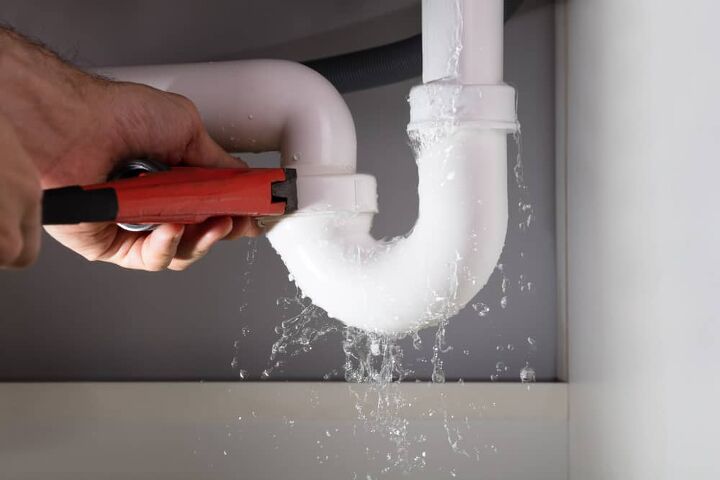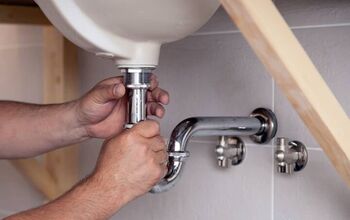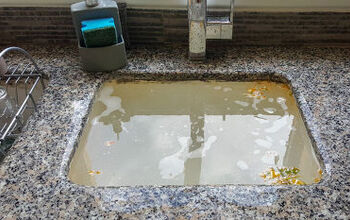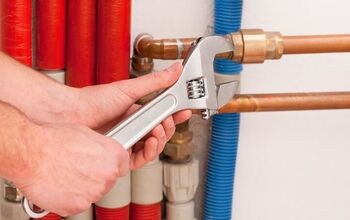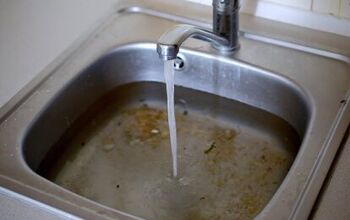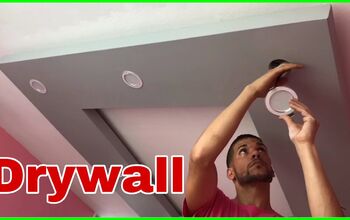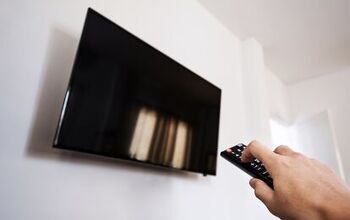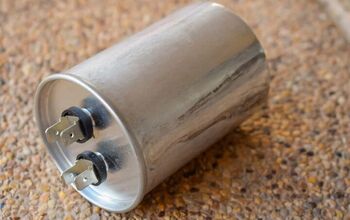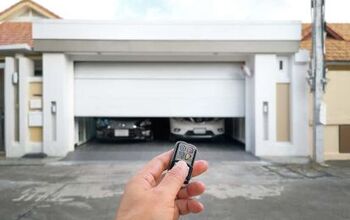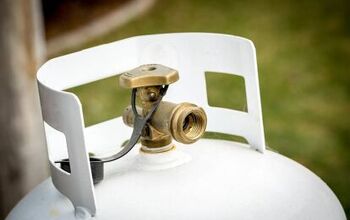Sink Drain Pipe Leaking At Connection? (Fix It Now!)

If there is one consistency about plumbing, it is that there is no such thing as a good leak. Should you notice water leaking from anywhere in your plumbing system, it is a real problem that needs to be addressed sooner rather than later.
From time to time, there may be a leak at one of your connections. There are a variety of potential issues at play here. It could be a clog, the pipes could be the wrong length, or the nut could be worn or loose. Being able to identify the issue means being able to implement a fix quickly.
Do You Need to Hire a Plumber?
Get free, zero-commitment quotes from pro contractors near you.

How to Spot Drain Pipe Leaking at the Connection
Part of the problem with leaks is that there is a chance that it is happening without being readily available. Those are the kinds of issues that can lead to prolonged leaking and even serious water damage if left unchecked long enough.
Even if you don’t see the connection leaking directly, there is one way to tell when things are wrong. Check the cabinets under your sink. You may notice that there is pooling water at the bottom of the sink. In some cases, you may notice that everything underneath is soaking wet.
In extreme cases, you may notice water stains. Water stains are an indication of potential warping and water damage. Water damage is serious as it can spread to other areas and repeat that damage.
What Causes The Leaking at the Connection?
Ideally, when you have noticed the leak, the first thing to do should be to wipe everything down. Get things dry to either prevent or stop the damage caused by the water. After that, the next step is to try to figure out the issue at hand.
Generally speaking, there are four main reasons why you would be experiencing a leak at the connection. Those four reasons are:
- Compression nut is worn. The connection point is held together by a compression nut. The nut can become worn or cracked over time, particularly at the threads. When that happens, water can get through at the point of connection. If the nut is noticeably damaged, it will need replacing.
- Compression nut is loose. One of the most common reasons for a leak at the connection point is a loose nut. Try tightening the nut first and foremost. In most cases, that should be enough to stop the leaking. If that doesn’t do it, you can move on to other troubleshooting methods.
- Pipes are the wrong length. Even if the installation was done by a professional, that does not necessarily mean the job was done properly. Pipes can be the wrong size, putting pressure on the joint at the connection. And that is where the leak can occur.
- P-trap clog. When there are clogs in your drain pipe, it can put extra pressure on the joints and pipes at the connection point. If your sink is having issues draining, be on the lookout for leaks as well as they often come in tandem.
Consider Water Pressure
Though it is somewhat of a rare issue, it could be that the water pressure in your home is too high for the pipes at the connection. Even if there is nothing really wrong with the seals or the pipes themselves, that excess water pressure can still force water out.
For most houses, a water pressure between 40 and 45 PSI is best, though there are some that get set as high as 50 and even up to 70. Use a pressure gauge to assess the water pressure in your main water supply.
If there is a water pressure issue, the best thing to do is contact a professional. A plumber will be able to make adjustments to the water pressure in your home which can resolve the leaking issue at the connection.
Stopping a Leak at the Connection Point
Thankfully, there are a variety of ways to fix the potential leak. Some are easier than others. Some may even require professional intervention depending on your comfort and experience level with plumbing repair.
- Tighten the nut. As covered above, the simplest fix is to usually tighten the nut at the connection. A loose nut is a common culprit in this instance. If that doesn’t do the trick, you may need to disassemble the connection in order to repair it.
- Reinstall or replace the nut. The nut can become damaged or is simply installed incorrectly. Try unscrewing the compression nut and sliding it back into place. Take a good look to ensure there are no cracks or stripped threads before putting it back. If there are, try replacing the nut with a new one.
- Pull the pipes apart. Clogs can become an issue for your pipes. Separate the pipes at the connection. If you notice that they are full of debris, hair, etc. then disconnect one end and empty the pipes. Be aware that you may have to check some of the other pipes in the event of a severe leak.
- Replace the plastic collar. The plastic collar that connects the pipes together could be damaged. Should your pipes have different diameters, make sure that the collar has the proper thickness to compensate for that difference.
- Refit the pipes. Pull the pipes apart by hand and refit them together. The male pipe should go about an inch deep into the corresponding pipe. If it doesn’t, then you will need a new pipe. Cut that one down to proper length using a hacksaw.
Can You Use Plumbers Putty to Stop a Leak?
There are some do-it-yourself types out there that will swear that plumber’s putty is a fix-all. The fact of the matter is that plumber’s putty really should only be used in certain instances. It is definitely not a fix-all and will provide serious disappointment if treated that way.
Where plumber’s putty can be used. Plumber’s putty is really only meant to be used for things like sealing drains and faucets. Putty can deteriorate over time and eventually leaks will come back. If you are using it for a leak solver, you will have to revisit the issue sooner rather than later.
Where to not use plumber’s putty. Under no circumstances should you use plumber’s putty on pipes or any component where water pressure comes into play. Never put putty in the threads of pipes. Things like this require a very specific type of adhesive to do the job.
Quick Fixes for Connection Point Leaks
If you’ve checked the nut and the pipes, then the joint could be the issue. Thankfully, there are a couple of quick fixes that can be implemented. Going with a professional is probably the safest route, but these can work just fine.
Epoxy compound. In most cases, the epoxy compound will work to form a seal over the leak. Even if this does stop the leak, keep in mind that it is not meant to be a permanent solution. You may still have to look into one of the other potential issues above to implement something more permanent.
Repair sleeves/pipe connectors. When it comes to a leak at the joint of the connection, there are a pair of tools that can work. A repair sleeve or rubber pipe connector should be flexible enough to wrap entirely around the leaking joint.
Measurement is important here as you will have to cut the rubber pipe connectors in order for them to work. If you have smaller joint leaks, the repair sleeve is probably the better option since it can clamp down with quite a bit of pressure.
Do You Need to Hire a Plumber?
Get free, zero-commitment quotes from pro contractors near you.

Will Gorilla Glue Stop a Water Leak?
There are some that will recommend using Gorilla Glue for fixing a leak in a flash. A Gorilla Glue waterproof patch and even seal tape should work to fix most leaks in just a few minutes. That said, it is not a permanent fix. Even if you stop the leak, you should consider a long-term solution.
Even the best DIY plans go awry. If tightening or replacing the pipes doesn’t work, call in a professional to help get the job done.

Ryan Womeldorf has more than a decade of experience writing. He loves to blog about construction, plumbing, and other home topics. Ryan also loves hockey and a lifelong Buffalo sports fan.
More by Ryan Womeldorf



